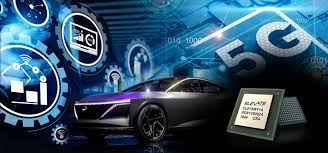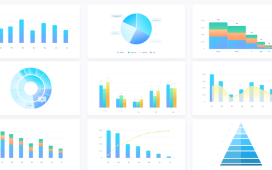The Mobile Industry Processor Interface (MIPI) is an industry standard for manufacturing mobile devices, laptops, tablets and various other hybrid devices. The MIPI interface, too, will play an important part in future connected vehicle solutions. The MIPI D-PHY layer, which supports display applications and cameras, is one of three physical layer requirements included in MIPI automated test equipment. Memory, and high-performance cameras and chip-to-chip applications, are all supported by M-PHY layers. The C-PHY layer has the same functionality as MIPI D-PHY. Furthermore, it is expected that by 2025, networked cars will be the norm. Scroll down to have a close look at their significance in smart connected mobility.
What Are Connected Vehicles?
The linked automobile is an example of cutting-edge technology and the “Internet of Things (IoT).” The Internet of Things refers to the connection of everyday objects to the internet in order to make life easier. This allows a person to have more remote control over items via a phone app. As a result, a connected car will have an internet connection, preferably via a WLAN, allowing real-time communication with other devices both inside and outside the vehicle.
You will be prompted by the automobile to communicate with a variety of additional connected gadgets. For example, the car might inform emergency services by immediately contacting the associated dealership. A MIPI tester is also utilized to increase efficiency and produce high-performing outcomes.
Interesting Features You Can’t Miss
Enhanced Safety
Everyone wants to be safe, especially when driving. While today’s cars have many safety features, linked cars are still the preferable option when passenger nad driver safety is a top priority. These futuristic cars will alert drivers to exterior risks as well as the vehicle’s internal responses. The sensors will detect the vehicle’s health, encouraging the driver to seek repairs as soon as possible.
Navigation Advancement
Connected automobiles will employ a powerful navigation system integrated with location-based services, rather than the GPS navigation systems seen in today’s cars. Let’s look at an example: connected cars will display you the closest gas station where you can fill up your tank. As a result, its navigation is not restricted to a destination guide, but also assists you with the nearby areas that are critical for you in a given situation.
Smart Infotainment
Connected automobiles will provide passengers with high-quality streaming broadcast messages from services such as Spotify, Netflix and Hulu. Bluetooth or FM radio are the only options available in today’s automobiles. However, networked cars will provide a vast selection of on-demand digital content. Apple hopes to provide a relaxing iOS experience in connected automobiles, allowing users to access a variety of third-party apps through the Apple App Store. This is an opportunity that Google will not pass up.
The mobile business wants their devices to function better and match current customer needs such as greater storage, high-quality cameras, and increased security, among other things. The effecient performance of connected vehicles can be achieved with the use of automation testing equipment powered by MIPI standards. As a result, consumers are able to take advantage of its prospective benefits.





